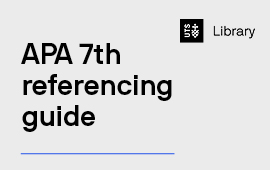In developing your publishing strategy, we recommend identifying high quality journals aligned with your discipline and topic. While there is no single definition of ‘quality’ for journals, it’s important to understand how different citation-based metrics are used to assess quality.
Publication metrics
For an introduction to ‘traditional and non-traditional research outputs’ and guidance on where to publish, see the Research Outputs page in Staff Connect.
Journal metrics
Journal metrics measure the academic impact of journals. There are many citation-based indicators for journals, most of which are calculated using the data from two databases: Web of Science or Scopus.
Here are some guides to get you started:
- Find Top Journals for a Topic Using Scopus
- Find Top Journals for a Topic Using Web of Science
- Think.Check.Submit toolkit helps you identify respected and reputable journals
- Publishing advice for UTS researchers from Staff Connect
Scopus-based indicators
- CiteScore is the average citations per document (calculated annually) that a title receives in SCOPUS over a three-year period. Only use CiteScore to compare journals in the same field.
- SCImago Journal Rank (SJR) expresses the average number of weighted citations per document. A citation will be counted differently depending on the ranking of the citing journal in a field.
- Source Normalized Impact per Publication (SNIP) measures contextual citation impact by weighting citations based on the total number of citations in a subject field. SNIP is derived by taking a journal’s citation count per paper and dividing it by the citation potential in its subject field. SNIP corrects for differences in citation practices between scientific fields.
- For tutorials on scops-based indicators, please visit the Scopus training site.
Web of Science-based indicators
- Journal Impact Factor (JIF), is the average number of citations that articles from the journal published in the past two years (e.g., 2014-2015) have been cited in the JCR year (e.g., 2016). JIF is calculated year by year. Only use JIF to compare journals in the same field.
Excellence in Research Australia (ERA) journal list
ERA identifies and promotes excellence in Australian universities using international benchmarks. To maximise the chances of your research being used in the UTS ERA submission, you must publish in a journal in the ERA 2023 Submission Journal List. These are created through collaboration between all Australian universities and scholarly societies and are a comprehensive collection of journals. You can find a list of journals by 4 digit Field of Research (FoR) codes.
Australian Business Deans Council (ABDC) journal quality list
Australian Business Deans Council (ABDC) Journal Quality List follows an extensive review conducted by expert panels, which assesses journals relating to business and taxation law; economics; finance including actuarial studies; information systems; management, commercial services and transport and logistics; marketing and tourism; and other areas.








